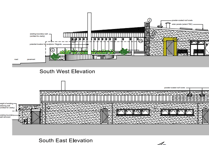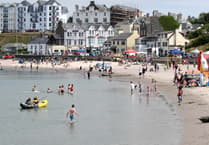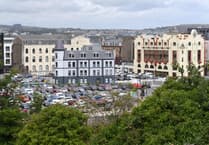We enjoyed our talk by James Franklin from Culture Vannin, who showed us, ’Rare Unseen films of Peel’.
We certainly would love to see more.
The summer visits were fully subscribed and huge successes.
We were relieved when we were able to resume indoors at our Peel Centenary Centre. Some masks were necessary as was some spaced out seating if people felt more comfortable with that.
There were no such worries on the Calf of Man when Dessie Robinson was working there!
As now, work centred on netting birds, identifying and weighing them and ringing for future identification.
This work is of such importance as man’s pressure on the natural world is alarming. Keeping count of breeding pairs and their ability to find adequate food sustainably is critical not just for them but for us.
We may consider ourselves as top of the food tree but if roots, trunk and branches fail we come crashing down.
Sea birds rely on a rich supply of fish or even grasses and other plants beneath the surface of the sea. Careless fishing can dredge up plants leaving the seabed a desert. The reduction in bird populations is all too obvious.
The weather played a major part on the Calf, even more so than on our larger island. Life was and still is centred on the outdoors and this was particularly significant when the farm was an active, commercial undertaking.
Cows were swum across to and from the aptly named Cow Harbour. Sheep seemed to have enjoyed the luxury of fishing boats!
Dessie showed us many pictures, the masses of bluebells being particularly striking.
The old farmhouse is used by the warden and visitors and is a real time capsule.
There is no mains electricity.
A limited supply was available from a basic windmill coupled to batteries. Paraffin lamps are useful but have limited power making reading rather difficult.
Any fuel for heating is shipped in as is most foodstuff.
Grain had been grown and it is possible to grow vegetables. Sheep and other livestock such as hens were useful but supplementary feed might well be required for these. Prolonged periods of bad weather could be disastrous.
Trees have been planted around the farmhouse but many more would be useful on the island.
The lighthouses built by the Stephenson brothers around 1818 really have and continue to be lifesavers. Even so, wrecks can still occur and all sorts of goods have come ashore including sewing machines that may well still be in use!
A pond once supplied water to a mill and a simple crane enables goods to be raised from a boat. A large hole in the ground leads to a cave. Is this still used by smugglers?
This was a great talk with lovely shots of rock formations such as The Lion and the Drinking Dragon. As for the wildlife, so precious yet so threatened. We need to really step up our efforts to transform fine words into fine actions.

.png?width=209&height=140&crop=209:145,smart&quality=75)



Comments
This article has no comments yet. Be the first to leave a comment.